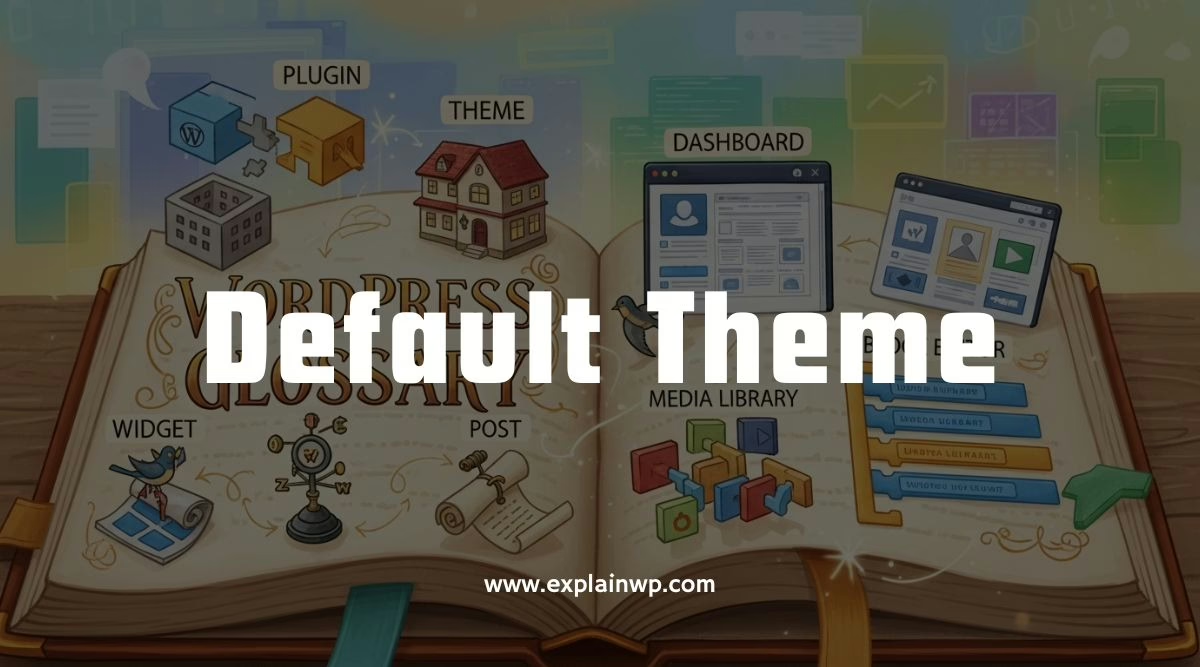Default Theme

The default themes in WordPress, akin to a foundation stone, epitomize the platform’s prowess and versatility, acting as the initial themes upon installation.
They can be substituted with any other WordPress theme, and serve as a fallback option in the event of theme deletion or issues.
Originated in 2003 by Matt Mullenweg, the first default theme has been succeeded by annual releases, each denoted by the corresponding year.
These default themes embody the contemporary design trends and standards, fortifying WordPress’s prominence.
Through regular updates, they ensure compatibility, bolster functionality, address security concerns, and enhance performance.
The default theme’s pivotal role in shaping WordPress’s overall design and as an instructive tool for users cannot be understated.
Summary & Key Takeaways
Show
What is WordPress Default Theme? The Origins of Default Themes in WordPress
The first default theme in WordPress was created by Matt Mullenweg in 2003.
This was followed by the WordPress Classic Theme and then the Kubrick theme, which introduced the ability to switch themes.
Default themes have played a significant role in WordPress theme development and have had a notable impact on user experience.
These themes serve as a starting point for users to understand the functionality and design possibilities of WordPress.
They showcase the features and capabilities of the platform and provide users with a fallback option in case of issues with other themes.
Default themes also contribute to the growth and popularity of WordPress by reflecting current design trends and standards.
Regular updates to default themes ensure compatibility, address security vulnerabilities, and improve performance, encouraging users to explore and experiment with new themes.
The Evolution of Default Themes in WordPress
Throughout the history of WordPress, there has been a continuous development and progression of the default themes.
These default themes have had a significant impact on user experience and have played a crucial role in shaping the overall design of WordPress.
- User Experience: Default themes serve as a starting point for users, providing them with a pre-designed template that showcases the features and capabilities of WordPress. This allows users to easily set up their websites and experiment with different layouts and functionalities.
- Shaping WordPress Design: Each new default theme reflects the design trends and standards of its year, influencing the overall design direction of WordPress. As default themes evolve, they introduce users to modern design trends and possibilities, encouraging them to explore and experiment with new themes.
- Power and Influence: The default theme’s prominence and association with WordPress give it a sense of authority and power. Users often trust default themes more than third-party themes, as they are developed and maintained by the WordPress team themselves.
The Significance of Default Themes in WordPress
Default themes in WordPress have played a crucial role in shaping the overall design and user experience of the platform.
These themes serve as the first impression for users, showcasing the capabilities and features of WordPress.
They provide a starting point for website design and serve as a fallback option when other themes encounter issues.
The impact on user experience cannot be understated, as default themes introduce users to the possibilities of WordPress and help them understand how themes work within the platform.
In addition, default themes have played a significant role in promoting WordPress adoption.
By showcasing the design trends and standards of each year, they have contributed to the growth and popularity of WordPress.
Overall, default themes have been instrumental in shaping the WordPress experience and encouraging users to explore and experiment with different themes.
